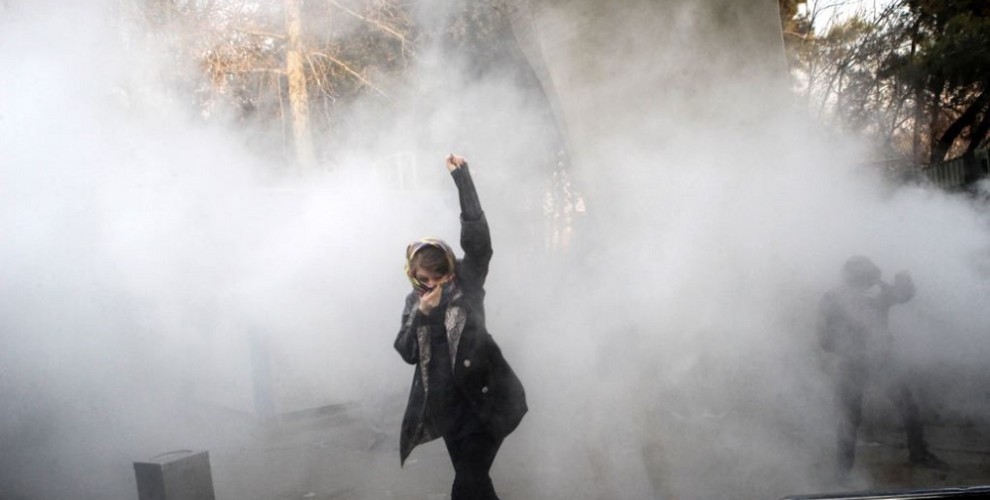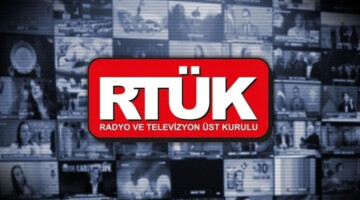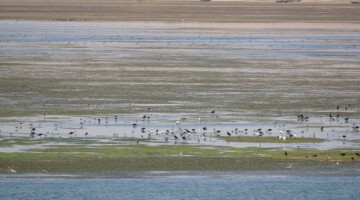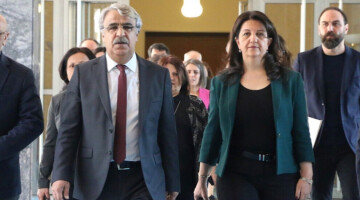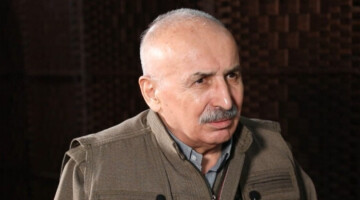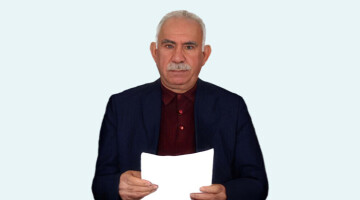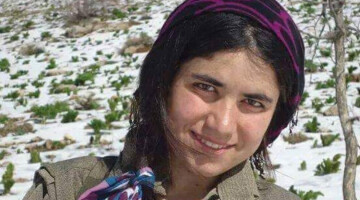In spite of the widespread crises that swept the world, there have been significant developments in East Kurdistan (Rojhilat) and Iran. The crisis of drought and water supply, the failure of Islamic Republic’s functioning mechanism, the crisis of unemployment, and the social crisis, the weakening of public confidence in the regime, the widespread corruption in management, and the anomalies of the political structure of Iran made most of the topics in 2018.
On the other hand, the struggle for people's liberation and popular protest, the intensification of poverty and the spread of unemployment, widespread strikes across the country peaked over the past year.
Iran's 2018 events at a glance:
The anti-government protests began on December 28, 2017 in Mashhad and other major cities of Khorasan province.
The protests lasted one month, dozens were killed and hundreds were injured. More than 100 Iranian cities across Iran and almost all metropolises joined the demonstrations. The exact number of deaths was never announced, but the names of 28 people who were killed by the regime were released by international media and domestic social media. Nine of the victims were young protesters who were detained by security forces during the protests and were killed in prison under torture. It was reported that the Islamic Republic had deliberately killed the detainees in order to spread terror and intimidation. Sina Ghanbari (23) in Evin Prison, Vahid Heydari (23) in Arak Prison, Ariya Roozbehi Babadi, Sarou Ghahremani (24) from Sanandaj, Kianoush Zandi (24) from Sanandaj, Ali Polladi (26) from Chalous, Shahaboddin Abtahizadeh (20) from Arak, Forouzan Jafarpour (27), Talib Bastami, a medical student from Ilam, were among the youth who were murdered in prison by Iran's regime torturers.
Turkish state’s occupation of Afrin and the apparent cooperation of the Iranian regime with Erdoğan
The attack by the tyrannical regime of Turkey in Afrin faced widespread reactions in Kurdistan and throughout the world. The Islamic Republic of Iran banned any protest against the attack in coordination with Turkey. Bukan representative in the Iranian Parliament on January 24 addressed Erdogan, "You and those above you cannot kill the Kurds." Mohammad Qassim Osmani, a representative of the people of Bukan and a member Iran’s Parliament, responded to the invasion of Afrin by Turkish state during a speech at a parliamentary session.
In response to requests from the Turkish dictator and the al-Qaeda in Syria, the Iranian regime dismissed a request to hold a protest rally against the Turkish consulate in Urmia on January 25, 2018. A number of Kurdish civil activists in Urmia filed an official request for permission to hold a protest rally against the Turkish Consulate in the city to condemn Turkey's invasion of Afrin, but the request was rejected by the Urmia Governorate.
The Islamic Republic's actions in support of Turkish state crimes could not prevent the Kurdish national solidarity. A group of Kurdish university professors on January 27 condemned the attack on Afrin. In this regard, on January 31, seven non-governmental organizations of Baneh, the Women's Association, the Nujin Association, the Pajin Association, the Hajah Association, the Ashti Foundation, the Brujah Association and the Association of the Blind, issued a joint statement condemning the invading attack of the Turkish regime and its dependent mercenaries in Afrin, they urged immediate action by international organizations and institutions to end the aggression of the Turkish regime.
However, the regime of the Islamic Republic continued to support the killing of children and women by the criminal elements led by Turkey, and opposed with another request by civil activists on February 3 to gather before the Turkish embassy. In response to the Iranian regime's alliance with the fascist state of Turkey, extensive campaigns for national solidarity with Afrin were initiated. On Feb. 16, the Afrin Support Campaign released the names of 3905 people who participated in the campaign, condemning the crimes committed by the Turkish state in attacking and killing Afrin residents.
Irresponsibility of the Iranian government towards the survivors of their Kermanshah earthquake
Shahab Naderi, a spokesperson for Paveh and Horaman, said in a February 4 parliamentary session that 9 children had died as result of freezing cold and fever. After three months of the earthquake, it was announced that the survivors were left without shelter. According to government sources, 97 suicide attempts have been recorded among survivors of the earthquake.
Pressure, torture and execution of Gonabadi dervishes
The year 2018 was a bad year for Gonabadi dervishes. The detention of members of this ritual movement and suppression of their peaceful protests by law enforcement on February 19th reflected in the domestic and international media. In four days, three thousand Gonabadi dervishes were arrested. The severity of the repressions against Nematollahi Gonabadi dervishes was confronted with protest reactions by international human rights organizations. Iran's regime arrested one of the prominent dervishes, Nematullah Riahi, and left dozens of imprisoned dervishes physically and mentally tortured in prison.
Execution of children: Iran leading state in execution rate
Amnesty International reported on February 24, issuing a statement stating the persistence of widespread human rights violations by the Iranian government. Violations of religious freedom and freedom of expression, gender discrimination, the execution of minor criminals, and inhuman punishments such as flogging, hand crawling and blinding of convicted, violations of prisoners' rights, including torture during interrogations, denial of access to medical care and the continuation of inhumane conditions are among the subject that Amnesty International has underlined. There are no exact figures of the number of executions in Iran, but the names of 62 citizens, the date and place of their execution, have been published in the reports of human rights organizations.
Killing of the Kolbars by the Islamic Republic
Along with the crackdown on the society, the Islamic Republic continued to attack Kurdish Kolbers and businessmen. Shooting at those who are trading at the borders has claimed life of dozens. According to the Kurdistan Human Rights, 64 Kurdish Kolbers and traders have been killed in direct shootings by Iranian troops while 104 other were severely injured.
Violence: the fruit of four decades of Islamic Republic culture and ethics for the Iranian people
Accurate annual statistics are not published by government agencies about spousal abuse or child abuse in Iran. However, according to Reza Jafari, the head of Iran's Social Emergency Department, in the first six months of the current year (from March 21 to October 21, 2018), 14599 spousal abuse and 16,000 child abuse cases were recorded. Independent organizations consider real statistics to be several times the size of government figure.
The pressure on environmental activists and their murder
The repressive policies of the Islamic Republic against the various spectrum of society also targeted environmental activists. Only on February 28 the detention of 14 environmental activists was reported in Iran.
The crackdown on human rights and environment activists has been speeded up by the Iranian regime. According to Iran International TV, in an interview with well-informed sources, the number of arrests of environmental activists has reached 14 since February.
Sharif Bajwar, an Iranian civilian and environmental activist from Marivan, a member of the Board of the Green Society of Chia, and responsible for fire department of this association, along with Omid Khonepoushi member of the Green Chia Society and two other foresters, August 25, while putting out a fire in Pile and Selsi forests were caught on fire and lost their lives. Bajwar’s colleagues, described his death as a pre-planned assassination led by Iran’s intelligence.
Assassination of Kurdish Human Rights Activists
On midnight July 16, Iqbal Moradi, a human rights activist in the political arena, and a patriot resident in Panjwin, was targeted in a terrorist attack and was martyred. Iqbal Moradi was earlier also targeted by the armed elements of the terrorist regime of Iran but was rescued. The family and friends of Iqbal consider the Iranian regime responsible for his assassination. Zaniar Moradi, son of Iqbal Moradi, was executed in Tehran at an unknown location less than two months after the assassination of his father by the Iranian regime.
Unemployed Students
According to state statistics, 100,000 people with Ph.D. in Iran are unemployed. According to Omid Ali Parsa, head of the Iranian Center for Statistics, 3 million and 226 thousand people are completely unemployed in Iran.
The unemployment rate in Kurdistan is shocking. According to the representative of Marivan and Solava in the Iranian parliament, the unemployment rate in Sanandaj Province is more than forty percent. The representatives of the cities of Kermanshah and Ilam have mentioned the number of unemployed in their provinces more than 60%.
Teachers, unions and truckers on strike
Iranian teachers gathered in May 10, 2018 in protest over the livelihood and commodification of education in front of the Plan and Budget Organization. During the gathering, a number of teachers were arrested. Mohammad Habibi, a member of Tehran Teachers' Association, was arrested and sentenced to seven and a half years imprisonment, two years of a ban on political and social activism and 74 lashes. Along with him, six other detainees were sentenced to nine months in prison and a fine of 74 lashes. October 14, 2018 Iranian teachers went on strike in several Iranian cities. The new round of arrests began in the second phase of teacher strikes in the academic year of 2017-2018. According to the Coordinating Council of Iranian Teachers Organization, which organized the strikes, security agencies, including the Ministry of Intelligence, arrested at least 13 teachers and summoned 30 other teachers.
Since early summer, a large part of the businessmen in Tehran grand bazaar and the cities of Shahriyar, Karaj, Qeshm, Bandar Abbas, Mashhad and Kermanshah, Ghorveh, Sanandaj rallied against the downturn in the market, unprecedented exchange rate fluctuations, and lack of customer due to price rises. In the middle of summer, in the midst of rising gold prices, as well as the rapid growth of coin prices and a sharp decline in the value of Iranian Rial against the dollar, it began spreading from the new Shahpour industrial city of Isfahan to Karaj. The demonstrations quickly spread to Isfahan and various regions such as Karaj, Shiraz, Rasht, Tehran, Qazvin, Zanjan, and Sari. On the third day, Mashhad, Kermanshah, Hamadan and Qarchak also participated, and on the fourth day Ahwaz, Urmia and Qom joined the protests.
On May 22, 2018, in 160 cities of the 25 provinces of Iran, a nationwide truck strike began throughout Iran and lasted for 9 days. The cause of the general strike by truckers during the past few years was the need for a legal calculation model for fares, rising of insurance prices, tolls, high commission rates, high repair costs and high prices for spare parts for cars. Since the first round of the strikes failed to guarantee their demands, the second wave of Iran's truckers strike began on September 23, and overwhelmingly covered more than 30 Iranian provinces and 236 cities. In the second wave of Iranian truck strikes, more than 256 people were arrested.
US’ withdrawal from Iran deal and the return of sanctions
US President Donald Tramp on May 8 officially announced that his country will be withdrawing from Iran deal. The decision of the US government has put Iran's economy at a standstill. On November 5, the US government launched economic and commercial sanctions against the Islamic Republic. The United States exempted six countries from the sanctions for limited trade with Iran.
IRGC rocket attack on Kurdish parties in South Kurdistan
The Islamic Republic Revolutionary Guards attacked the headquarters of the Kurdistan Democratic Party of Iran in South of Kurdistan on September 8th, 2018 by launching seven earth-to-earth missiles. According to the Kurdistan Democratic Party, 15 members of its leadership, its cadres and Peshmerga died in the attacks and about 40 others have been wounded, with the death of one of the injured after the passing of 12 days, the number of deaths has reached 16.
Armed attack on parade of Iran’s armed forces
During the armed forces parade on the occasion of the start of the Iran-Iraq war on September 22nd, an armed attack took place. According to preliminary reports, 25 military personnel were killed and 60 injured. The Ahwaziya Movement claimed responsibility for the attack.
Sanandaj-Tehran bus fire disaster
The deadly crash of a tanker carrying crude oil with a passenger bus left 15 dead. This tragedy occurred on midday on Tuesday, July 19th. The tanker was driving from Hosseini Blvd. in Sanandaj and crashed on a passenger bus that had been stopped outside the terminal. At the time of the incident, the bus had 17 passengers, only two were rescued and 15 were killed.
Attack on workers protest
The security forces - the riot guard and the IRGC and the security forces - were deployed in various locations of Ahwaz, attacking the protesters after three weeks of democratic and legitimate protests by sugar cane workers of Haft Tapeh on December 17th. In response to the crackdown, the workers announced that they would continue to protest until the release of the arrested people. On December 18, the number of detainees rose to 41 people.
Children who were burned in a school fire
On December 18, 2018 a fire occurred at a non-profit pre-school in Sistan and Balouchestan. Four of the students died as a result of the burn injuries caused by the oil fires in the school.

